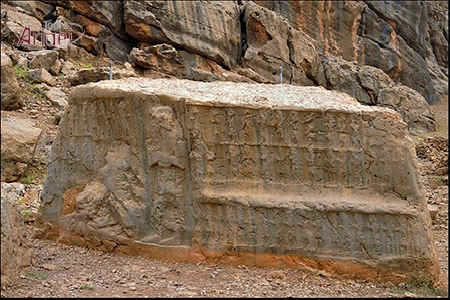Six reliefs remain from the Elamite era in Kul-e Farah village close to Izeh. The reliefs portray religious rituals of animal sacrifice, carrying the statues of gods, and military victories. According to archaeologists, the earliest perceptions of religion among humans was illustrated in the reliefs of Kul-e Farah. Based on Elamite cuneiforms of Kul-e Farah, the place was possibly a temple for an Elamite god named Narsina. Elamite reliefs and inscriptions in Kul-e Farah are benchmarks in carving sequence of events in the form of stories that later were continued by Empires such as Achaemenid and Sassanid. Eshkaft Salman is another archaeological site in Izeh region that houses some Elamite reliefs and inscriptions.
